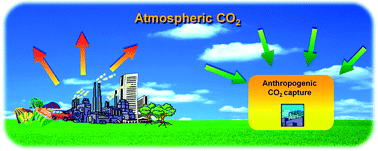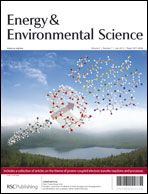Air as the renewable carbon source of the future: an overview of CO2 capture from the atmosphere†
Abstract
The burning of our diminishing fossil fuel reserves is accompanied by a large anthropogenic CO2 release, which is outpacing nature's CO2 recycling capability, causing significant environmental harm. Much is being done to avert this crisis including more efficient technology for usage, savings and replacing carbon fuels with alternatives whenever feasible. The capture of CO2 followed by sequestration (CCS) into geologic formation or under the seas has also been proposed and in some cases implemented. Carbon capture and recycling (CCR) to fuels and materials is another promising approach. At first, capturing carbon dioxide from concentrated sources such as fossil fuel burning power plants, industrial plants and natural sources might be the most practical. However, the capture of CO2 from the atmosphere is also technically feasible despite its low concentration (∼390 ppm) and presents even some benefits compared to point source CO2 capture. The present article reviews methods developed for the capture of CO2 directly from the air as well as their advantages and drawbacks. While strong bases such as sodium hydroxide and potassium hydroxide could be used, their regeneration is energy intensive, requiring high temperatures. Amines either physically or chemically immobilized on solid supports require much lower temperatures for their regeneration and are therefore promising candidates.

- This article is part of the themed collection: Carbon Dioxide

 Please wait while we load your content...
Please wait while we load your content...